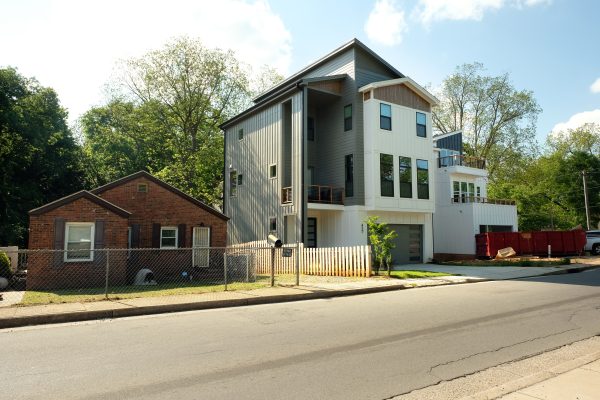Charlotte’s nowhere near the finish line for its development rules rewrite

With straw votes on the controversial elements and the final adoption of Charlotte’s new vision plan looming in the next month, there’s a sense that the city’s reaching a finale in the years-long process of rewriting its development rules.
But adopting the vision plan might end up – surprisingly – being one of the easier parts of the whole process. That’s because after Charlotte City Council approves the 2040 vision plan, they’ll have to actually write the arcane and detailed rules to implement it – which means potential fights about everything from where exactly duplexes and triplexes are allowed to whether the legislature will ever authorize measures developers oppose like mandatory inclusionary zoning.
“Adopting the plan is the easy part,” council member Malcolm Graham said with a laugh at Monday’s meeting. “What comes afterward is the hard part.”
As the city’s first comprehensive land use and development plan since 1975, the 2040 plan was always bound to ruffle some feathers. But since the draft was unveiled in October, there’s been a spate of opposition.
Neighborhood groups from Myers Park to the Far East Neighborhood Coalition have said duplexes and triplexes shouldn’t be allowed in every residential area in the city. Development groups like the Real Estate & Building Industry Coalition have come out against proposals like mandatory impact fees to cover the cost of new infrastructure, with REBIC launching a new campaign called “Let’s Get it Right, Charlotte,” this week. And city council members and some housing advocates have said they’re worried encouraging denser development will accelerate gentrification and displacement.
At the same time, other groups, like the Charlotte-Mecklenburg Planning Commission and the newly formed Community Benefits Coalition, have come out in favor of the plan. Council member Braxton Winston has said repeatedly that the city’s current development rules aren’t stopping gentrification and displacement, and encourage segregation.
Council has spent dozens, if not hundreds, of hours considering the plan, along with community meetings and town halls to gather feedback. On Monday, May 17, they’re set to vote on whether to keep the provision that would allow duplexes and triplexes in all residential districts.
“The implication of that would be huge,” deputy city manager Taiwo Jaiyeoba said at a planning commission meeting Tuesday. “The key part of that change is 2.1 [the single-family zoning changes]. I don’t believe it should be removed.”
After that vote, city staff will present a new draft of the plan, with final adoption slated for mid-June. But that’s not the finish line. Here’s what comes next.
Place-type mapping
One of the big changes in Charlotte’s development rules will be replacing traditional zoning districts (like R-3, the standard subdivision zoning that allows three houses per acre) with “place types” (Neighborhood 1, Manufacturing & Logistics, etc.).
Jaiyeoba and other staff plan to seek community input to map out where those place types actually go, once the plan is adopted. As written now (and after one round of proposed revisions already), the plan would allow duplexes and triplexes in all residential place types, but not necessarily all lots. Those lots governed by HOAs and covenants that forbid multifamily housing would remain protected. That could mean that the neighborhood-by-neighborhood mapping effort actually determines where denser development is allowed – which could be a contentious process, to say the least.
Charlotte’s unified development ordinance
If you’ve watched land use and development for any length of time, you know it’s a world that loves acronyms. One of the most frequently employed is “UDO,” for unified development ordinance. This is the new set of regulations that’s been under development for years to replace Charlotte’s tangled web of rules for everything from zoning districts to sidewalks, setbacks to stormwater, with a single, integrated document.
The UDO draft will be published a month or so after Charlotte City Council approves the 2040 plan, Jaiyeoba has said. Then, city staff will work with stakeholders and the public to refine the UDO, with adoption expected sometime in 2022.
Since the UDO will actually determine a lot of the regulations that developers care most about, expect plenty of wrangling over this more technical document – which means at least another year or so until we have the final picture of what Charlotte’s development rules will look like going forward.
The legislature
At least three of the major “aspirational” goals in the 2040 plan – mandatory inclusion of affordable housing in some new developments, mandatory community benefit agreements between developers and neighborhoods, and broader impact fees – would require the legislature to step in and grant Charlotte the power to implement those policies.
That could shift the arena from City Council to Raleigh, where the General Assembly has often balked at handing Charlotte more authority (and in cases like the HB2 vs. nondiscrimination ordinance fight of 2016, they’ve reduced the city’s authority).
Ongoing updates
One reason Charlotte’s 2040 plan has been so contentious and unwieldy: It’s the first time the city has done this kind of sweeping, citywide vision in more than a generation. Going forward, city staff plan to update the plan every five to 10 years, keeping pace with Charlotte’s growth and changes.
Which means it probably won’t be another 45 years before you hear about Charlotte’s plan again.
As planning commission member Phil Gussman put it this week: “There’s a lot of work to be done yet. Now, we kind of need to move on to the hard part.”